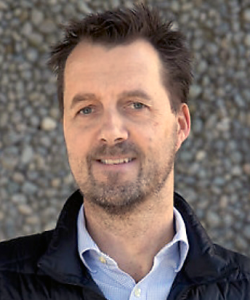
You’re announcing a company goal to reduce emissions from your burners by 50 percent or more. What was the origin of this ambitious plan?
In 2021, we started the combustion business because there were large supply chain issues. For us as an equipment manufacturer, not having burners meant we could not ship our equipment. After evaluating other people’s burners and not finding any products that met our expectations, we decided to make our own burners. That solved our problem. When people found out we could produce these burners, they asked, “Hey, can you sell them to us?” So, that is when we started selling our direct-fired and indirect-fired burners into industrial process heating applications. Regarding our emissions reduction goal: When we talk to our customers, we hear questions like, “We want to make our equipment cleaner, but electrifying is not an option. Other burner manufacturers have products, but they are expensive and complicated to use. Can Algas-SDI help?” Our company purpose is to “Make fuel gases easier to use” so the answer is “Yes.”
We decided not to set the goal to be as good or better than existing solutions that achieve must-lower emissions, but instead take a modest, but meaningful first step. By putting a 50-percent emissions reduction goal in front of us, we are forced to think outside of the box, but this still allows the development team to come up with solutions that are simple and can be priced the same as our existing burners. On top of that, knowing that the world is watching is also motivational to the Algas-SDI development team.
How are you achieving this without making the burners more expensive and more complicated to use and install?
Based on some preliminary testing, we know that the emissions from our burners can be reduced without the need for complicated control schemes. There are several other proven emission-reduction techniques that we plan to test in our laboratory. We will try most of these and see what works best without adding cost and complexity.
We are in the process of building several advanced prototypes that we plan to test in our laboratory. By using rapid prototyping techniques like 3D printing and CNC machining, we produce parts in weeks, sometimes days. This not only allows the development team to test a lot of prototypes but also do a lot of learning in a short amount of time. We do, of course, expect some failures along the way, but we have a team culture that celebrates these failures because they allow us to learn and make improvements.
In addition to working closely with our customers, we also developed a network of combustion engineers we use to brainstorm ideas with. This network allows us to tap into 100-plus years of theoretical and practical combustion experience and as a result, again, speed up learning.
Will the new burners be compatible with existing burners?
That is absolutely the goal, yes.
The biggest challenge with ultra-low-emission burners is in the need for control complexity and required changes to the process. By basing all our work on the 25 or so burner models we developed in the last couple of years, we think that it gives us the best opportunity to reduce emissions from burners that are backwards compatible. Setting this constraint will also allow us to work closely with our customers and trial the burners in actual real-life applications because no major equipment or process changes will be required.
What makes the customer experience more valuable to you than the technology behind your equipment?
We extensively involve our customers in our development process. Our sales team and engineers frequently visit sites to work with customers to come up with the best burner heating solution for their application.
Equipment manufacturers know best how to deliver heat to the process and how this makes their customers produce the highest-quality products. Most people do not care how the heat is produced and by involving our customers, we don’t lose sight of what “job” the burner is doing. We see competitors copy each other’s designs without validating what customers need. We want to change that default approach. We, of course, keep an eye on our competitors. But first and foremost, we listen to what our customers want and need. Our customers have a job to do, and it’s our job to make sure that we make their lives easier, not more complicated. It’s important to get customer’s feedback, not just about how the burner applies heat, but also how robust the burner is and how easy it is to maintain. By talking to the customer and deploying products in the field, we can come up with a design that will work for years and predictably performs under a wide range of real-life operating conditions..
What do you expect the industry response to be to your emission reduction plan?
Publicizing this goal is our way to increase the reach of our message and we hope it will invite companies with even modest emission challenges to reach out and invite us to work with their team. We are also hoping that by taking this incremental approach, burners with reduced emissions will become the norm and expectation for most industrial process heating applications, even for those customers that are not yet forced by legislation to lower the emissions from their heating equipment. Because if that happens, the transition to cleaner process heating will happen a little bit sooner.
MORE INFO algas-sdi.com

























